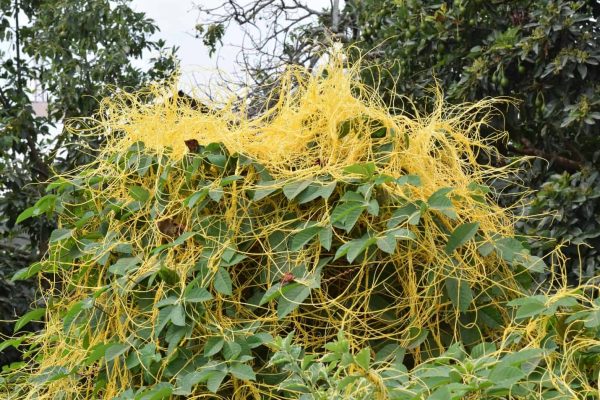Parasitic plants have received little attention in Rwanda. Two species of Striga are known and cause considerable crop loss in some regions. Striga hermonthica occurs in the southern part of the country where it has been reported to damage grains. I have seen S. asiatica in the vicinity of the village of Mbyo where families told me they had to stop growing maize because of the damage. In one field the farmer grew legumes for twenty years and then planted sorghum which was severely damaged by the witchweed. Broomrapes, species of Orobanche, have not been reported to be a serious problem, interesting because of the widespread cultivation of potatoes and cole crops, well known hosts for some broomrape species and a serious constraint to the growth of these crops especially in the Mediterranean region. There are several species of dodders, Cuscuta, in the country but like broomrapes they appear to be of limited importance. Cuscuta kilimanjari, is given its name because it was first described from Mount Kilimanjaro. It is widespread in East and Central Africa and is distinct with its rigorous growth and bright color. I have never seen Kilimanjaro dodder on a native host except in South Sudan.
For further reading see Haustorium 82.
